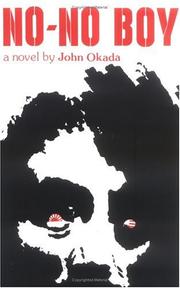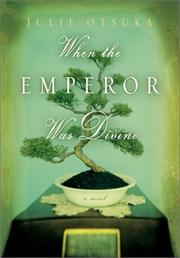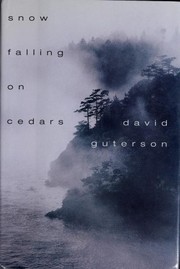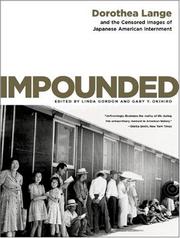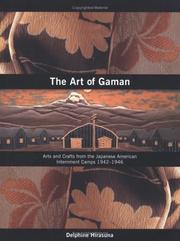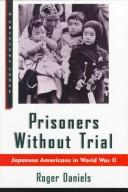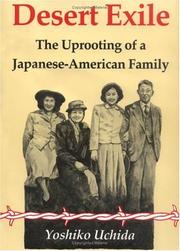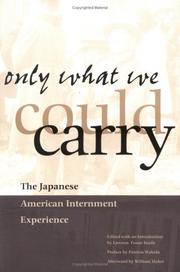Are you interested in learning more about the history of Japanese American internment camps during World War II? Look no further! We’ve compiled a list of the 20 best books on Japanese American internment camps that will provide you with insight into this dark period of American history. From personal memoirs to scholarly accounts, these books offer a comprehensive and deeply moving look at the experiences of those affected by this devastating chapter in our nation’s past. Whether you’re a history buff or simply curious to learn more, these Japanese American internment camps books are sure to captivate and enlighten.
Contents
- 1 20 Best Books About Japanese American Internment Camps
- 2 No-No Boy
- 3 Farewell to Manzanar
- 4 When the Emperor Was Divine
- 5 Hotel on the Corner of Bitter and Sweet
- 6 The Buddha in the Attic
- 7 Snow Falling on Cedars
- 8 Concentration Camps on the Home Front: Japanese Americans in the House of Jim Crow
- 9 The Train to Crystal City: FDR’s Secret Prisoner Exchange Program and America’s Only Family Internment Camp During World War II
- 10 Impounded: Dorothea Lange and the Censored Images of Japanese American Internment
- 11 The Art of Gaman: Arts and Crafts from the Japanese American Internment Camps 1942-1946
- 12 The Color of the Land: Race, Nation, and the Politics of Landownership in Oklahoma, 1832-1929
- 13 Prisoners Without Trial: Japanese Americans in World War II
- 14 The Japanese American Internment: An Interactive History Adventure
- 15 The Children of Topaz: The Story of a Japanese-American Internment Camp
- 16 Desert Exile: The Uprooting of a Japanese American Family
- 17 Only What We Could Carry: The Japanese American Internment Experience
- 18 Farewell to Manzanar
- 19 When the Emperor was Divine
- 20 Impounded: Dorothea Lange and the Censored Images of Japanese American Internment
- 21 The Invisible Thread: A Portrait of Jewish American Women
- 22 Conclusion
- 23
- 24 The 20 Apple Computer History Books: Best 2024 Update and Review
- 25 Top 20 Best Books on Travel And Adventure:2024 Edition
- 26 Best Books About Rockstars. 2024 Edition
20 Best Books About Japanese American Internment Camps
No-No Boy
by John Okada
No-No Boy by John Okada is a powerful and poignant novel that delves into the experiences of Japanese American individuals who were impacted by the internment camps during World War II. The story follows the protagonist, Ichiro, a young man who faces the dilemma of being labeled a “no-no boy” for refusing to serve in the US military while his family is imprisoned in the internment camps. Okada’s compelling narrative provides a raw and authentic portrayal of the struggles and conflicts faced by Japanese Americans during this tumultuous period in history. Through Ichiro’s journey, the novel explores themes of identity, loyalty, and the harsh realities of discrimination and prejudice. No-No Boy is a must-read for anyone interested in gaining a deeper understanding of the Japanese American internment camps and the lasting impact it had on individuals and families.
Farewell to Manzanar
by Jeanne Wakatsuki Houston and James D. Houston
Farewell to Manzanar is a powerful memoir that recounts the experiences of Jeanne Wakatsuki Houston and her family as they were forcibly relocated to the Manzanar internment camp during World War II. This poignant book about Japanese American internment camps provides a firsthand account of the injustice and hardship faced by Japanese Americans during this dark period in American history. Through vivid storytelling, the authors shed light on the resilience and strength of the human spirit in the face of adversity. The book offers a compelling and emotional insight into the struggles of the Japanese American community, making it a must-read for anyone interested in this important chapter of American history.
When the Emperor Was Divine
by Julie Otsuka
When the Emperor Was Divine by Julie Otsuka is a powerful and haunting book about the Japanese American internment camps during World War II. The novel follows a Japanese American family as they are forced to leave their home and live in the internment camps. Through the perspectives of the mother, son, and daughter, Otsuka captures the fear, confusion, and heartache of the family’s experience. The novel is a gripping portrayal of the injustice and trauma inflicted upon Japanese Americans during this dark period in American history. Otsuka’s lyrical prose and vivid storytelling make this a compelling and unforgettable read that sheds light on a little-known aspect of wartime America.
Hotel on the Corner of Bitter and Sweet
by Jamie Ford
Hotel on the Corner of Bitter and Sweet by Jamie Ford is a poignant and compelling novel that explores the impact of the Japanese American internment camps during World War II. Set in Seattle, the story follows the friendship between a Chinese American boy, Henry Lee, and a Japanese American girl, Keiko Okabe, as they navigate the complexities of racial prejudice and wartime discrimination. Through their bond, the novel delves into themes of love, loss, and the resilience of the human spirit in the face of adversity. Ford’s evocative storytelling captures the emotional turmoil and cultural tensions of the era, offering a powerful exploration of the lasting effects of the internment camps on individuals and communities. This heartfelt and thought-provoking book about Japanese American internment camps is a must-read for anyone interested in this dark chapter of American history.
The Buddha in the Attic
by Julie Otsuka
The Buddha in the Attic by Julie Otsuka is a captivating and haunting novel that explores the experiences of Japanese picture brides who immigrated to the United States in the early 20th century. The story is told through the collective voice of these women, as they recount their journey to America, their struggles to adapt to a new culture, and their eventual internment during World War II. Otsuka’s lyrical prose and unique narrative style give voice to the untold stories of these women, shedding light on their resilience and the challenges they faced. This powerful book about Japanese American internment camps is a poignant reminder of a dark chapter in American history, and a testament to the strength and spirit of those who lived through it.
Snow Falling on Cedars
by David Guterson
Snow Falling on Cedars is a captivating novel by David Guterson that delves into the complexities of love, justice, and prejudice. Set on a small island in the Pacific Northwest, the story unfolds amidst the aftermath of World War II and centers around a murder trial involving a Japanese American fisherman. Through vivid prose and rich character development, the novel explores the lingering effects of wartime trauma and the deep-seated prejudices that impact the lives of the island’s inhabitants. The book offers a poignant portrayal of human resilience and the enduring power of love, even in the face of injustice and societal divisions. With its evocative storytelling and thought-provoking themes, Snow Falling on Cedars is a must-read for anyone interested in a compelling narrative that sheds light on the experiences of Japanese Americans during and after the war.
Concentration Camps on the Home Front: Japanese Americans in the House of Jim Crow
by John Howard
Concentration Camps on the Home Front: Japanese Americans in the House of Jim Crow by John Howard is a compelling and insightful book about the Japanese American internment camps during World War II. Howard explores the harrowing experiences of Japanese Americans who were forcibly removed from their homes and incarcerated in camps, shedding light on the injustices they faced on the home front. Through meticulous research and powerful storytelling, the author delves into the intersection of racism and wartime hysteria, revealing the impact of these policies on individuals and families. This book offers a poignant and thought-provoking examination of a dark chapter in American history, making it essential reading for anyone interested in understanding the complexities of Japanese American internment camps.
The Train to Crystal City: FDR’s Secret Prisoner Exchange Program and America’s Only Family Internment Camp During World War II
by Jan Jarboe Russell
The Train to Crystal City by Jan Jarboe Russell is a gripping non-fiction book about the little-known history of Japanese American internment camps during World War II. The book sheds light on FDR’s secret prisoner exchange program and America’s only family internment camp, located in Crystal City, Texas. Russell’s thorough research and compelling storytelling bring to life the experiences of the thousands of Japanese Americans who were unjustly detained during the war. Through personal accounts and historical documentation, the author explores the human cost and emotional turmoil of this dark chapter in American history. The Train to Crystal City is a powerful and eye-opening read that delves into a lesser-known aspect of the Japanese American internment camps, making it a must-read for anyone interested in this period of American history.
Impounded: Dorothea Lange and the Censored Images of Japanese American Internment
by Linda Gordon and Gary Y. Okihiro
Impounded: Dorothea Lange and the Censored Images of Japanese American Internment by Linda Gordon and Gary Y. Okihiro is a compelling and illuminating book about Japanese American internment camps. Through the powerful photographs of Dorothea Lange and the insightful analysis of the authors, readers are taken on a journey through a dark chapter in American history. The book sheds light on the censorship and manipulation of images depicting the internment camps during World War II, providing a fresh perspective on the government’s suppression of the truth. Gordon and Okihiro’s collaboration offers a thought-provoking exploration of the impact of visual representation and the resilience of the Japanese American community during a time of great adversity. This japanese american internment camps book is a must-read for anyone interested in understanding this period of injustice and its lasting effects.
The Art of Gaman: Arts and Crafts from the Japanese American Internment Camps 1942-1946
by Delphine Hirasuna
The Art of Gaman is a fascinating book on Japanese American internment camps during World War II. Delphine Hirasuna showcases the remarkable arts and crafts created by Japanese American internees during their time in the camps from 1942 to 1946. The book provides a compelling and poignant look at the resilience and creativity of the internees, as they used everyday materials to create beautiful and functional objects. The term “gaman” itself means “enduring the seemingly unbearable with patience and dignity,” and the book captures the spirit of this concept through the art and craftwork of the internees. The Art of Gaman offers a unique and enlightening perspective on a dark chapter of American history, celebrating the strength and creativity of those who were unjustly imprisoned. It is a must-read for anyone interested in the history and the human spirit.
The Color of the Land: Race, Nation, and the Politics of Landownership in Oklahoma, 1832-1929
by David A. Chang
The Color of the Land by David A. Chang explores the complex history of race, nation, and landownership in Oklahoma from 1832 to 1929. This groundbreaking book delves into the intersection of race and landownership, revealing the ways in which race and nation have shaped the politics of land in Oklahoma. Chang’s meticulous research sheds light on the struggles of various racial and ethnic groups, including African Americans, Native Americans, and European settlers, in their quest for land and belonging. Through a compelling narrative, Chang uncovers the deep-seated racial tensions and power dynamics that have influenced landownership in Oklahoma. This book is a must-read for anyone interested in the intersection of race, nation, and landownership in American history.
Prisoners Without Trial: Japanese Americans in World War II
by Roger Daniels
Prisoners Without Trial: Japanese Americans in World War II by Roger Daniels is a compelling book about Japanese American internment camps during World War II. Daniels provides a comprehensive overview of the government’s decision to forcibly relocate and detain over 120,000 Japanese Americans, the majority of whom were U.S. citizens, in internment camps. Through meticulous research and personal accounts, the author sheds light on the injustices and hardships endured by these individuals as they were stripped of their rights and belongings. Daniels also delves into the legal and political justifications for the internment, as well as the long-term impact on the Japanese American community. This book on Japanese American internment camps offers a sobering look at a dark chapter in American history and serves as a reminder of the importance of protecting civil liberties, even in times of crisis.
The Japanese American Internment: An Interactive History Adventure
by Rachael Hanel
The Japanese American Internment: An Interactive History Adventure by Rachael Hanel is an immersive and informative book on Japanese American internment camps during World War II. Readers are presented with the opportunity to make decisions throughout the book that will shape their reading experience, allowing them to engage with the story on a more personal level. As they navigate through the interactive narrative, they will gain a deeper understanding of the challenges and injustices faced by Japanese Americans during this dark period of American history. This interactive history adventure provides a unique and engaging way for readers to learn about the experiences of those who were affected by the internment camps, making it a captivating and educational read for anyone interested in this important chapter of American history.
The Children of Topaz: The Story of a Japanese-American Internment Camp
by Michael O. Tunnell
The Children of Topaz is a compelling book about Japanese American internment camps that tells the powerful story of a group of children who were forced to live in the Topaz internment camp during World War II. Written by Michael O. Tunnell, this book offers a poignant and eye-opening account of the Japanese American experience during a dark chapter in American history. Through the eyes of the children, readers gain insight into the challenges, fears, and resilience of those who were unjustly imprisoned simply because of their heritage. Tunnell’s narrative is both informative and deeply moving, shedding light on the impact of wartime hysteria and prejudice on innocent families. This japanese american internment camps book is a must-read for anyone interested in understanding this tragic period in American history and the resilience of the human spirit.
Desert Exile: The Uprooting of a Japanese American Family
by Yoshiko Uchida
Desert Exile: The Uprooting of a Japanese American Family by Yoshiko Uchida is a poignant memoir that vividly portrays the devastating impact of the Japanese American internment camps during World War II. Uchida recounts her family’s forced relocation from California to the desolate desert camps, where they faced harsh living conditions and the loss of their civil liberties. Through her powerful narrative, she captures the emotional turmoil, resilience, and strength of the Japanese American community during this dark chapter in American history. This compelling book about Japanese American internment camps offers a deeply personal perspective on the injustice and trauma experienced by thousands of families during this period. Uchida’s intimate storytelling and candid reflections make Desert Exile a must-read for anyone seeking to understand the lasting effects of this shameful episode in American history.
Only What We Could Carry: The Japanese American Internment Experience
by Lawson Fusao Inada
Only What We Could Carry is a poignant and powerful book on the Japanese American internment experience during World War II. Written by Lawson Fusao Inada, this book offers a collection of firsthand accounts, poems, and artwork that provide a deeply personal and moving insight into the lives of those who were forced into internment camps. Through the voices of those who lived through this dark period in American history, the book paints a vivid picture of the injustices and hardships endured by Japanese Americans during their internment. With its raw emotion and compelling storytelling, Only What We Could Carry is an essential read for anyone seeking to understand the impact of the Japanese American internment camps.
Farewell to Manzanar
by Jeanne Wakatsuki Houston
Farewell to Manzanar is a poignant memoir by Jeanne Wakatsuki Houston, chronicling her family’s experience in the Japanese American internment camps during World War II. The book vividly portrays the hardships, injustices, and resilience of the Japanese American community during a dark chapter in American history. Through the eyes of a young girl, readers are taken on a journey of loss, fear, and ultimately, hope as the family navigates life in the Manzanar camp. Houston’s powerful storytelling and emotional depth make this a compelling and essential read for anyone interested in learning about the Japanese American internment camps. This book offers a firsthand account of a dark period in American history and sheds light on the resilience and strength of the human spirit in the face of adversity.
When the Emperor was Divine
by Julie Otsuka
When the Emperor was Divine by Julie Otsuka is a poignant and powerful book about Japanese American internment camps during World War II. The novel follows a Japanese American family as they are forced to leave their home and live in a government-run camp. Through the perspectives of the mother, son, and daughter, the book explores the emotional and psychological impact of their displacement and confinement. Otsuka’s lyrical prose and vivid imagery bring to life the fear, confusion, and resilience of the characters as they navigate the harsh realities of war and prejudice. When the Emperor was Divine is a haunting and thought-provoking portrayal of a dark chapter in American history, and a reminder of the enduring strength of the human spirit in the face of injustice.
Impounded: Dorothea Lange and the Censored Images of Japanese American Internment
by Dorothea Lange
Impounded: Dorothea Lange and the Censored Images of Japanese American Internment is a powerful and haunting book on Japanese American internment camps during World War II. This compelling book about Japanese American internment camps reveals the censored photographs taken by acclaimed photographer Dorothea Lange, which were hidden from the public eye for decades. The images capture the harsh realities and injustices faced by Japanese Americans as they were forcibly relocated and detained in internment camps. Through Lange’s lens, the book offers a moving and unfiltered look at a dark chapter in American history, shedding light on the resilience and strength of those who endured such hardships. A must-read for anyone interested in learning about the Japanese American internment camps and the impact of war on innocent lives.
The Invisible Thread: A Portrait of Jewish American Women
by Diana Bletter
The Invisible Thread: A Portrait of Jewish American Women by Diana Bletter is a captivating exploration of the lives and experiences of Jewish American women. Through a series of interviews and personal stories, Bletter delves into the unique challenges and triumphs of these women, offering a poignant and insightful look at their resilience and strength. The book weaves together a tapestry of narratives, illuminating the invisible thread that connects these women across generations and backgrounds. With its intimate and powerful storytelling, The Invisible Thread is a compelling read that celebrates the rich tapestry of Jewish American women’s lives.
Conclusion
Exploring the impact of Japanese American Internment Camps through literature is a powerful way to gain insight into this dark chapter of American history. The 20 best books about Japanese American internment camps offer a range of perspectives and experiences, shedding light on the resilience and struggles of those affected. Whether you’re seeking firsthand accounts, historical analysis, or fictional narratives, these books provide a comprehensive understanding of this important period. Dive into these compelling stories to deepen your knowledge and empathy for the individuals who endured the injustice of internment.
Which Japanese American Internment Camps book is best?
The best book on Japanese American Internment Camps can vary with personal preference, but three widely recommended titles are:
- No-No Boy by John Okada,
- Farewell to Manzanar by Jeanne Wakatsuki Houston and James D. Houston,
- When the Emperor Was Divine by Julie Otsuka.
Each offers valuable insights and could be a great starting point.
What are the best books to learn about Japanese American Internment Camps?
For those looking to learn about Japanese American Internment Camps, there is a wealth of literature that can provide a comprehensive understanding of the subject. Some of the most highly recommended books include:
- No-No Boy by John Okada,
- Farewell to Manzanar by Jeanne Wakatsuki Houston and James D. Houston,
- When the Emperor Was Divine by Julie Otsuka,
- Hotel on the Corner of Bitter and Sweet by Jamie Ford,
- The Buddha in the Attic by Julie Otsuka,
- Snow Falling on Cedars by David Guterson,
- Concentration Camps on the Home Front: Japanese Americans in the House of Jim Crow by John Howard,
- The Train to Crystal City: FDR’s Secret Prisoner Exchange Program and America’s Only Family Internment Camp During World War II by Jan Jarboe Russell,
- Impounded: Dorothea Lange and the Censored Images of Japanese American Internment by Linda Gordon and Gary Y. Okihiro,
- The Art of Gaman: Arts and Crafts from the Japanese American Internment Camps 1942-1946 by Delphine Hirasuna
These books offer a range of perspectives on Japanese American Internment Camps, covering various aspects and approaches to the subject.
What are the best books on Japanese American Internment Camps?
The best books on Japanese American Internment Camps include:
- No-No Boy by John Okada,
- Farewell to Manzanar by Jeanne Wakatsuki Houston and James D. Houston,
- The Color of the Land: Race, Nation, and the Politics of Landownership in Oklahoma, 1832-1929 by David A. Chang,
- Prisoners Without Trial: Japanese Americans in World War II by Roger Daniels,
- The Train to Crystal City: FDR’s Secret Prisoner Exchange Program and America’s Only Family Internment Camp During World War II by Jan Jarboe Russell,
- Snow Falling on Cedars by David Guterson.
Each offers unique insights into the subject. While these books on the topic of Japanese American Internment Camps are highly regarded, it’s important to note that any list of ‘best’ books is subjective and reflects a range of opinions.
What are the best Japanese American Internment Camps books of all time?
Choosing the best Japanese American Internment Camps books of all time can vary depending on who you ask, but seven titles that are often celebrated include
- No-No Boy by John Okada,
- Farewell to Manzanar by Jeanne Wakatsuki Houston and James D. Houston,
- The Buddha in the Attic by Julie Otsuka,
- The Train to Crystal City: FDR’s Secret Prisoner Exchange Program and America’s Only Family Internment Camp During World War II by Jan Jarboe Russell,
- The Art of Gaman: Arts and Crafts from the Japanese American Internment Camps 1942-1946 by Delphine Hirasuna,
- Prisoners Without Trial: Japanese Americans in World War II by Roger Daniels,
- and The Color of the Land: Race, Nation, and the Politics of Landownership in Oklahoma, 1832-1929 by David A. Chang.
Each of these books has made a significant impact in the field of Japanese American Internment Camps and continues to be influential today.

